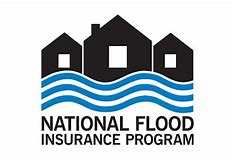 As it has numerous times in recent years, Congress has extended authorization for the National Flood Insurance Program (NFIP) until early December, as part of a continuing resolution to keep the U.S. government operating while budget talks continue. Unaffected is NFIP’s new Risk Rating 2.0 program, which took effect as scheduled on October 1. The new risk and pricing program affects new policies now and existing policies next April.
As it has numerous times in recent years, Congress has extended authorization for the National Flood Insurance Program (NFIP) until early December, as part of a continuing resolution to keep the U.S. government operating while budget talks continue. Unaffected is NFIP’s new Risk Rating 2.0 program, which took effect as scheduled on October 1. The new risk and pricing program affects new policies now and existing policies next April.
There are those, including members of the US Senate and US House of Representatives, wanting to delay RR 2.0’s effective date while others are clamoring that we must move forward because the current NFIP rating platform is unsustainable. The program has drawn criticism because, as one agent put it, the rates will skyrocket and no one will notice until the hefty renewal premium bill arrives. The National Association of Realtors held a lengthy webinar recently and is encouraging those following RR 2.0’s implementation to be patient so any glitches can be remedied.
As we’ve reported, Risk Rating 2.0 applies modern catastrophe modeling and correct actuarially-sound rates to the in-debt 50 year-old NFIP. FEMA’s Risk Rating 2.0 Florida Profile shows that 96% of current policyholders’ premiums will either decrease or increase by $20 or less per month. Roughly two-thirds of policyholders with older pre-FIRM homes (pre-1970’s) will see a premium decrease.
NFIP rates were developed 50 years ago, based on simple Base Flood Elevations and designating lines on a Flood Insurance Rate Map for Special Flood Hazard Areas, seen at the time as the riskiest of locations across the country. We now know well from experience, that is no longer the case. Lots has changed since then and Risk Rating 2.0 is seen as a way to keep up with the times and reflect the true cost of homeownership. It adopts modern insurance industry technologies, practices, and standards. It is a product of collaboration and science, where each property is priced individually rather than by a flood zone on an old map.
The NFIP has collected $60 billion in premiums since the 1970s but has paid out $96 billion in claims, according to FEMA. The last decade has been especially costly. Hurricane Katrina in 2005 saw the highest payout at $16.3 billion, followed by Hurricane Harvey ($8.9 billion) and Superstorm Sandy ($8.8 billion). Hurricane Irma, which impacted Florida, ranked ninth costliest with $1.1 billion in NFIP payouts. We are awaiting the flood tally from last month’s Hurricane Ida, but it is expected to be hefty, given the storm impacted both coastal and inland areas in more than a dozen states.
Risk Rating 2.0 is a natural evolution from policies of the past, including 2012’s Biggert Waters Flood Reform Act and the follow-up Homeowner Flood Insurance Affordability Act in 2014. Risk Rating 2.0, while somewhat controversial, seeks to improve how rates are calculated utilizing the most modern flood modeling available, while balancing equity and availability in the marketplace. Whether or not NFIP achieves that remains to be seen and we are hopeful that the changes are successful for all involved.
You can learn more by visiting our Flood Insurance & Resilience webpage, which includes a link to the growing list of private flood insurance companies in Florida offering an alternatives and complements to NFIP policies.


